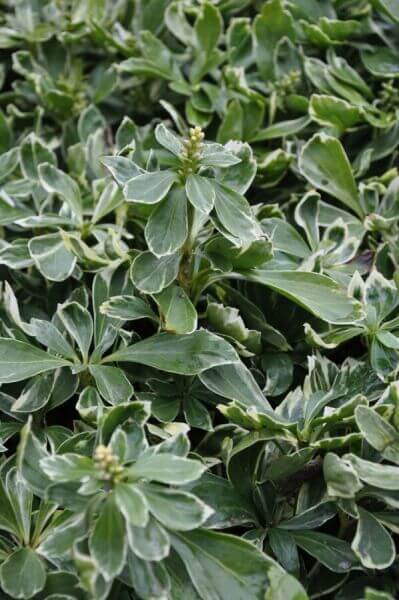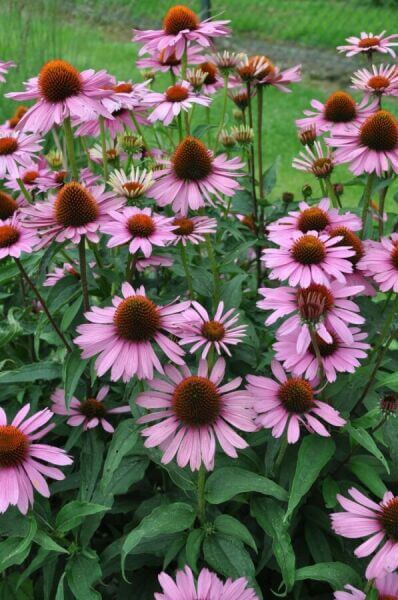Flowering Hedge Plants For Colorful Borders
Flowering Hedge Plants For Colorful Borders
Blog Article
Top Hedge Plants For Your Garden
Boost your garden's attraction with rich hedge ranges such as Yew (Taxus), Thuja, Laurel, Photinia, and Bamboo, commemorated for their structural integrity and ecological benefits.
Yew and Thuja provide evergreen protection and winter season strength, while Laurel provides fast growth and broad, fragrant leaves.
Photinia adds seasonal charm with its lively red foliage, and Bamboo provides a low-maintenance, peaceful ambiance.
These hedges improve air quality, lower sound, and produce tranquil, private areas.
Correct planting, spacing, and upkeep ensure energetic development and environmental harmony.
Check out how these rich varieties can raise your garden's charm and well-being.
Secret Takeaways
Change Your Garden With Lush Hedge Varieties
- Select Yew for its thick, evergreen growth and unparalleled durability.
- Select Laurel for its fast development and broad leaves, ensuring quick personal privacy.
- Choose Photinia for its lively seasonal foliage, which turns a striking dark red.
- Make use of Bamboo for a low-maintenance, winter-hardy hedge with aesthetic appeal.
- Area plants 2-3 per meter and prune frequently for ideal growth and health.
Popular Hedge Plants
When transforming a garden with lush hedge varieties, it's vital to think about popular hedge plants such as Yew, Thuja, Laurel, and Photinia due to their distinct attributes and benefits.
Yew (Taxus) is highly esteemed for its durability and dense, green growth, making it a prime choice for sustaining landscapes.
Thuja is noted for its evergreen foliage and robust winter season resilience.
Photinia includes seasonal vibrancy with red leaves that darken gradually, developing vibrant visual appeal.
Laurel offers rapid growth and aromatic, broad leaves, perfect for quick privacy.
Additionally, Bamboo is an excellent choice for ambiance, providing a low-maintenance, winter-hardy alternative that boosts the garden's visual with its stylish, swaying walking canes.
These choices cater to a range of horticultural requirements and choices.
Advantages of Garden Hedges
Garden hedges use a plethora of advantages, making them an important addition to any landscape. These natural barriers are affordable to implement and offer considerable wind security, enhancing air circulation and contributing to sound decrease. The dense foliage of hedges like Thuja and Beech guarantees privacy by obstructing exposure, creating a tranquil and remote environment.
Hedges likewise play a vital function in microclimate policy, providing a steady environment that promotes plant growth and decreases temperature variations. Their complex leaf structures filter pollutants, improving air quality and adding to a healthier garden ecosystem.
Moreover, hedges stand out in sound decrease, absorbing and deflecting acoustic waves to lower ambient sound levels. This dual functionality of providing both acoustic and visual privacy boosts the overall serenity and visual appeal of any garden.
Planting and Upkeep Tips
For an effective hedge, careful preparation of the planting area is important. Ensure the soil has appropriate pH and drain to support strong root development.
Area the plants appropriately for the selected types. Water the hedge frequently during its initial growth phase, adjusting as needed with seasonal modifications.
Carry out a organized insect control and disease avoidance method, using natural or chemical treatments when essential. Regularly inspect for aphids, mites, and fungal infections.
Apply mulch to keep wetness and reduce weeds. Seasonal pruning promotes thick development and air blood circulation, essential for plant health.
Following these guidelines will assist you cultivate a lively, properly maintained hedge that improves the appeal of your garden.
Spacing and Cutting Standards
Spacing and Trimming Guidelines
Proper spacing and trimming are essential for cultivating healthy, visually appealing hedges. Appropriate spacing makes sure each plant gets adequate nutrients, light, and airflow.
Follow these guidelines for ideal hedge upkeep:
- Spacing: Position hedge plants 2-3 plants per meter to motivate robust development.
- Pruning Methods: Routine pruning is vital for keeping preferred hedge height and shape. Cut new growth in summertime and cut down older wood throughout winter.
- Seasonal Care: Adjust trimming approaches and schedules according to seasonal requirements to ensure plant health.
- Hedge Height: Regularly screen and cut to preserve the wanted hedge height and attain consistent aesthetic appeals.
Following these steps will guarantee your hedge prospers, improving both the appeal and functionality of your garden.
Picking the Right Hedge
Picking the Right Hedge
Choosing the appropriate hedge includes examining elements such as mature height, foliage density, and ecological resilience. Effective hedge plant choice requires comprehending each types' growth attributes and site-specific versatility.
For example, Yew (Taxus) provides excellent durability and dense development, while Thuja is noteworthy for its winter season durability. In addition, thinking about maintenance requirements is important; fast-growing species like Laurel or Privet need routine trimming, whereas low-maintenance alternatives like Bamboo or Ivy might be preferable for those looking for very little upkeep.
Ecological factors such as soil type, light schedule, and moisture conditions must also direct the choice process. This cautious technique guarantees the selected hedges will grow, providing both functional and aesthetic advantages to the garden landscape.
Shipment and Planting Suggestions
To guarantee your hedge plants grow, they must be provided by specialized carriers and planted immediately upon arrival.
Follow these vital actions for effective planting:
- Soil Preparation: Improve the soil with natural matter to enhance drain and nutrient content.
- Planting Depth: Create a trench two times the width and equal to the depth of the root ball.
- Watering Strategies: Water completely after planting, keeping the soil regularly wet however not saturated.
- Mulching: Apply a layer of mulch to maintain moisture and suppress weeds.
Consumer Assistance and Service
Provided the essential role of prompt assistance in horticultural pursuits, our customer assistance team is available 6 days a week through telephone, e-mail, and social networks to offer skilled guidance and swiftly resolve any concerns. Their dedication to fast response times makes sure customer fulfillment by dealing with questions associated with plant health, optimal planting techniques, and upkeep schedules.

Reaction Time
Email
Within 24 hours
This extensive support group, enhanced by an outstanding 9.3/ 10 customer ranking, highlights our commitment to enhancing the gardening experience for every single client.
Frequently Asked Concerns
How Long Does It Take for Hedge Plants to Develop?
Hedge plants generally need one to three years to end up being fully developed, with the exact period differing by species and growing conditions.
Reliable care during this vital duration is vital for robust development. Consistent watering, watchful weed control, and appropriate fertilizer application are critical in promoting strong root advancement.
For instance, fast-growing species like Laurel might develop more quickly, while slower-growing varieties such as Yew may take longer. Diligent upkeep accelerates the establishment procedure, resulting in thick and healthy hedges.
What Are the Best Hedge Plants for Personal Privacy?
The concern of the very best hedge plants for privacy includes evaluating evergreen and deciduous alternatives.
Evergreen hedges like Thuja, Laurel, and Cypress supply year-round coverage, guaranteeing constant personal privacy.
On the other hand, deciduous hedges such as Beech use seasonal privacy, shedding leaves in chillier months.
Key upkeep ideas for privacy hedges consist of routine cutting, fertilizing in spring, and correct spacing-- normally 2 to 3 plants per meter.
In addition, constant watering and thorough weed removal are important for promoting healthy, thick development.
Can Hedge Plants Draw In Wildlife to My Garden?
Yes, hedge plants can attract wildlife to your garden by providing necessary advantages like shelter, food, and nesting sites, thus enhancing regional biodiversity. Yew, holly, and laurel are exceptional for drawing in birds, while ivy supports a variety of pests.
However, it is necessary to note that there are some downsides, such as increased maintenance to handle insects and routine upkeep. Thoroughly choosing and maintaining hedge varieties can assist balance these advantages and drawbacks, ultimately promoting a sustainable and vibrant community in your garden.
Exist Any Flowering Hedge Plants Available?
Yes, there are flowering hedge plants offered that can improve the appeal of your garden.
For example, Elaeagnus, also called Olive Willow, produces aromatic white flowers in the fall, including a touch of beauty.
Photinia, another popular option, showcases lively red leaves that mature into a rich green, producing a vibrant visual result throughout the seasons.
To make sure these plants prosper, it's vital to practice correct pruning techniques and seasonal maintenance, such as trimming brand-new development in the summer and cutting back in the winter.
These procedures will assist keep the health and visual appeal of your blooming hedges.
How Do I Prevent Pests in My Hedge Plants?
To avoid bugs in hedge plants, utilize natural insect control methods and maintain correct hedge care. Present helpful bugs like ladybugs, which take advantage of harmful pests, to develop a well balanced community.
Regularly check your hedges for signs of problem and immediately eliminate any afflicted parts to avoid the spread. Ensure the health of your hedges by using balanced fertilizers and supplying sufficient water.
Utilize mulching to keep soil moisture and correct spacing to decrease plant tension and promote robust growth. These practices jointly help in minimizing insect issues and preserving a healthy hedge.
Conclusion
In essence, choosing the best hedge ranges here such as Yew, Thuja, and Laurel can transform any garden into a serene haven. These plants supply year-round greenery, improve visual appeal, and offer useful benefits like sound decrease and wind protection.
Appropriate planting methods, precise spacing, consistent watering, and seasonal trimming are essential for optimal growth.
Reputable shipment services and skilled consumer assistance make sure a smooth experience from purchase to planting, making it easier than ever to raise your outdoor space.
Garden hedges offer a multitude of benefits, making them an important addition to any landscape. These natural barriers are economical to execute and provide substantial wind security, enhancing air blood circulation and contributing to noise reduction. The thick foliage of hedges like Thuja and Beech makes sure privacy by blocking exposure, developing a remote and serene environment.

Pruning Methods: Regular pruning is vital for preserving desired hedge height and shape. Trim brand-new development in summer season and cut back older wood during winter.
Report this page